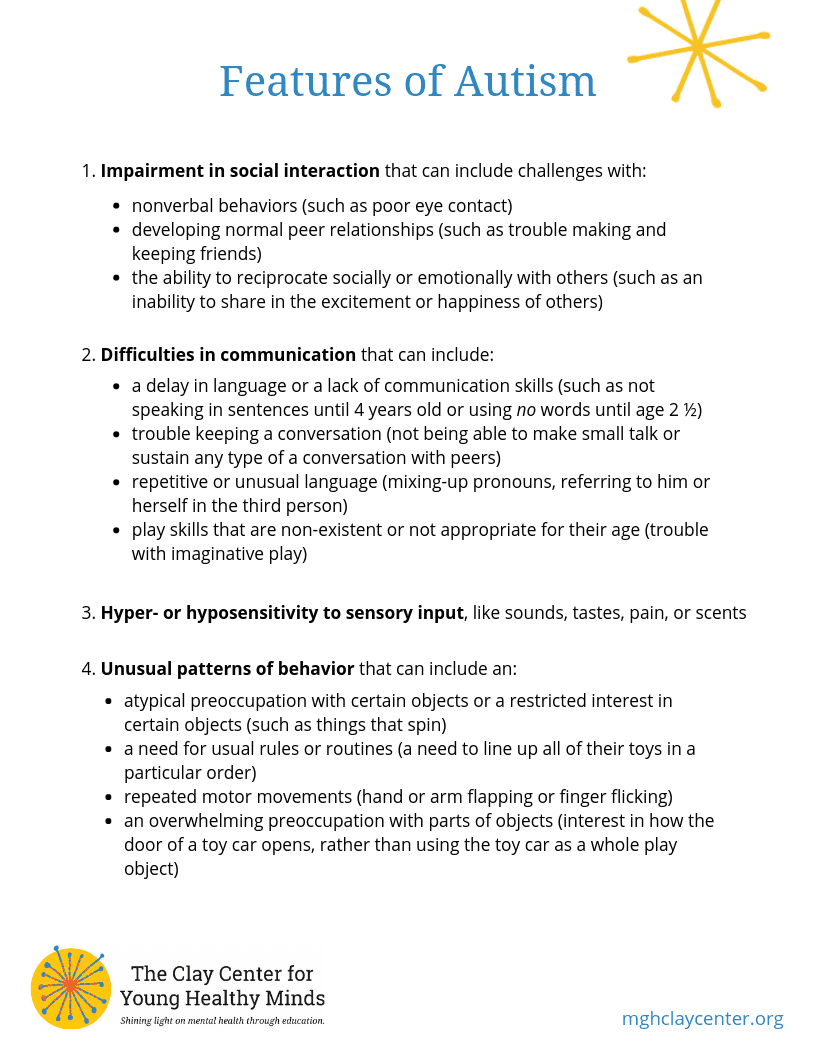News & Events
Download_Features of Autism
By Sara Rattigan | Published March 29, 2019 | Full size is 816 × 1056 pixelsPrint Out: Features of Autism
Print out text: Features of Autism
1. Impairment in social interaction that can include challenges with:
• nonverbal behaviors (such as poor eye contact)
• developing normal peer relationships (such as trouble making and keeping friends)
• the ability to reciprocate socially or emotionally with others (such as an inability to share in the excitement or happiness of others)
2. Difficulties in communication that can include:
• a delay in language or a lack of communication skills (such as not speaking in sentences until 4 years old or not using any words until age 2 ½)
• trouble sustaining conversation (such as not being able to make small talk or sustain any type of a conversation with peers)
• repetitive or unusual language (such as mixing-up pronouns or referring to self in the third person)
• play skills that are nonexistent or inappropriate for age (such as trouble with imaginative play)
3. Hyper- or hyposensitivity to sensory input, such as sounds, tastes, pain, or scents
4. Unusual patterns of behavior that can include an:
• abnormal preoccupation with certain objects or a restricted interest in certain objects (such as things that spin)
• a need to usual rules or routines (such as a need to line up all of their toys in a particular order)
• repeated motor movements (such as hand or arm flapping or finger flicking)
• an overwhelming preoccupation with parts of objects. (such as being interested in how the door of a toy car open, rather than using the toy car as a whole play object)


